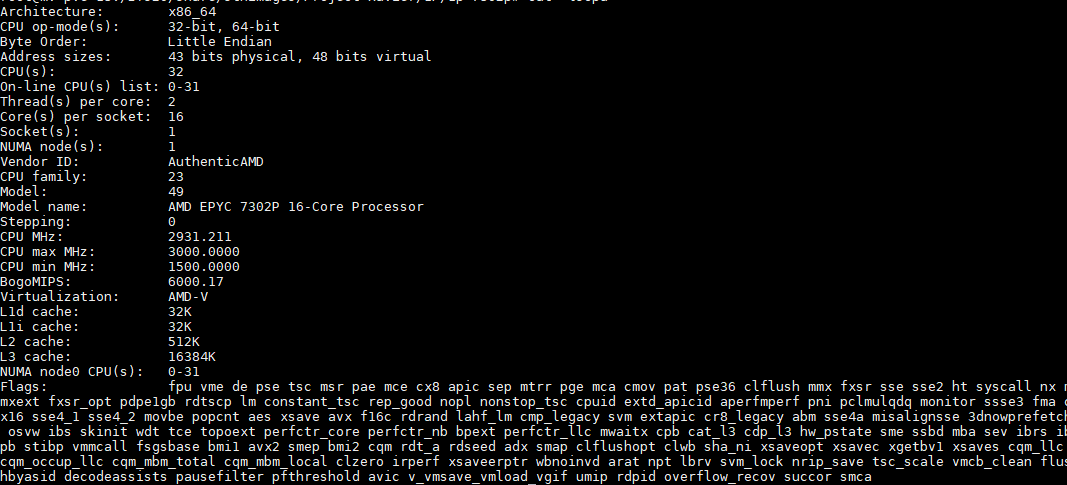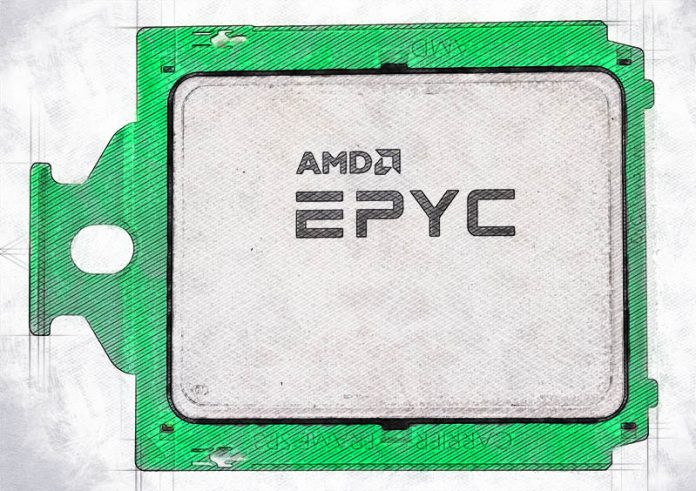While the AMD EPYC 7302P is a relatively low core count CPU for AMD, it is still an extraordinary part. Recently we reviewed the AMD EPYC 7402P Review 24 Cores of Performance and Value and thought it may be the best CPU on the market at the $1250 price range. There are still a huge number of sub-$1000 CPUs sold, and so we wanted to address that market by taking a look at the AMD EPYC 7302P. Suffice to say by the title, we think this is a clear winner in the segment. As a 16-core part, that means we are looking at it both in terms of 12-20 core single Intel Xeons, but also two 8 and 10 core Xeons when we say that. In this review, we are going to discuss why.
Key stats for the AMD EPYC 7302P: 16 cores / 32 threads with a 3.0GHz base clock and 3.3GHz turbo boost. There is 128MB of onboard L3 cache. The CPU features a 155W TDP. These are $825 list price parts. The “P” In the SKU name denotes that it can only run in single-socket mode and carries a discount as a result. The AMD EPYC 7302 would be the dual-socket capable version of this chip.
Here is what the lscpu output looks like for an AMD EPYC 7302P:

128MB of L3 cache is a massive number. There is also 8MB of L2 cache. Just for some perspective here, the original Microsoft Xbox shipped with only 64MB of RAM. Now we are talking about twice that figure for on-chip caches of $825 CPUs. In case you were curious, the Sony Playstation 2 has 32MB of RAM and the Playstation 3 has 256MB.
Compared to something more relevant, an Intel Xeon Silver 4208 or Silver 4210 has 13.75MB of cache. A 16 core current generation CPU like the Intel Xeon Platinum 8253 only has 22MB. 128MB is an enormous amount of cache.
With this generation, AMD did three things to increase CPU performance. First, IPC was increased generation-on-generation. Intel did little to increase IPC aside from adding more hardware security mitigations in its 2019 generation. Second, AMD increased clock speeds in this generation. For comparison, the AMD EPYC 7351P has a 2.4GHz base and 2.9GHz turbo with 64MB L3 cache at a 170W TDP. Third, doubling the cache size along with increasing memory speed from DDR4-2666 to DDR4-3200 helps keep the processor fed with data.
A Word on Power Consumption
We tested these in a number of configurations. The lowest spec configuration we used is a Supermicro AS-1014S-WTRT. This had two 1.2TB Intel DC S3710 SSDs along with 8x 32GB DDR4-3200 RAM. One can get a bit lower in power consumption since this was using a Broadcom BCM57416 based onboard 10Gbase-T connection, but there were no add-in cards.
Even with that here are a few data points using the AMD EPYC 7302P in this configuration when we pushed the sliders all the way to performance mode and a 155W cTDP:
- Idle Power (Performance Mode): 99W
- STH 70% Load: 169W
- STH 100% Load: 198W
- Maximum Observed Power (Performance Mode): 221W
As a 1U server, this does not have the most efficient cooling, still, we are seeing absolutely great power figures here. The impact is simple. If one can consolidate smaller nodes onto an AMD EPYC 7302P system, there are power efficiency gains to be attained as well.
Next, let us look at our performance benchmarks before getting to market positioning and our final words.





I’ve been looking into this processor for my home server. I’ve been wanting to upgrade the Xeon 1245-V5 (skylake based LGA 1150 4 core 8 thread CPU) I’ve currently have, because I’m actually hitting a core limit with the VMs I wanna spin up.
My question, what ATX form factor motherboard would work best with this CPU? I have a standard ATX Mid tower case for that server PC, so I can’t go too much bigger than that…
Great article!
This is likely my next processor for my home AIO ZFS server. Just waiting on ATX/E-ATX motherboards that support PCI-E 4.0
Gigabyte MZ32-AR0 (rev. 1.0) supports PCIe 4.0
For home servers where density is not a concern, the EPYC 7282 offers even better perf/$, plus you can run it in dual-socket configurations.
MZ32-AR0 is E-ATX, no? So the only ATX options currently are Supermicro H11SSL and ASRock Rack EPYCD8.
Supermicro Rome mobos are still 1-2 months away:
https://forums.servethehome.com/index.php?threads/any-new-supermicro-motherboard-on-the-pipe-for-epyc-rome.25430/page-4#post-238228
Where can I buy a motherboard that supports Epyc Rome and 3200 speed DDR4?
@Daniel Gigabyte: https://www.gigabyte.com/Server-Motherboard/MZ01-CE1-rev-2x#ov there’s a review here, (of a previous rev.?): https://www.servethehome.com/gigabyte-mz01-ce1-review-an-amd-epyc-atx-gpu-motherboard/